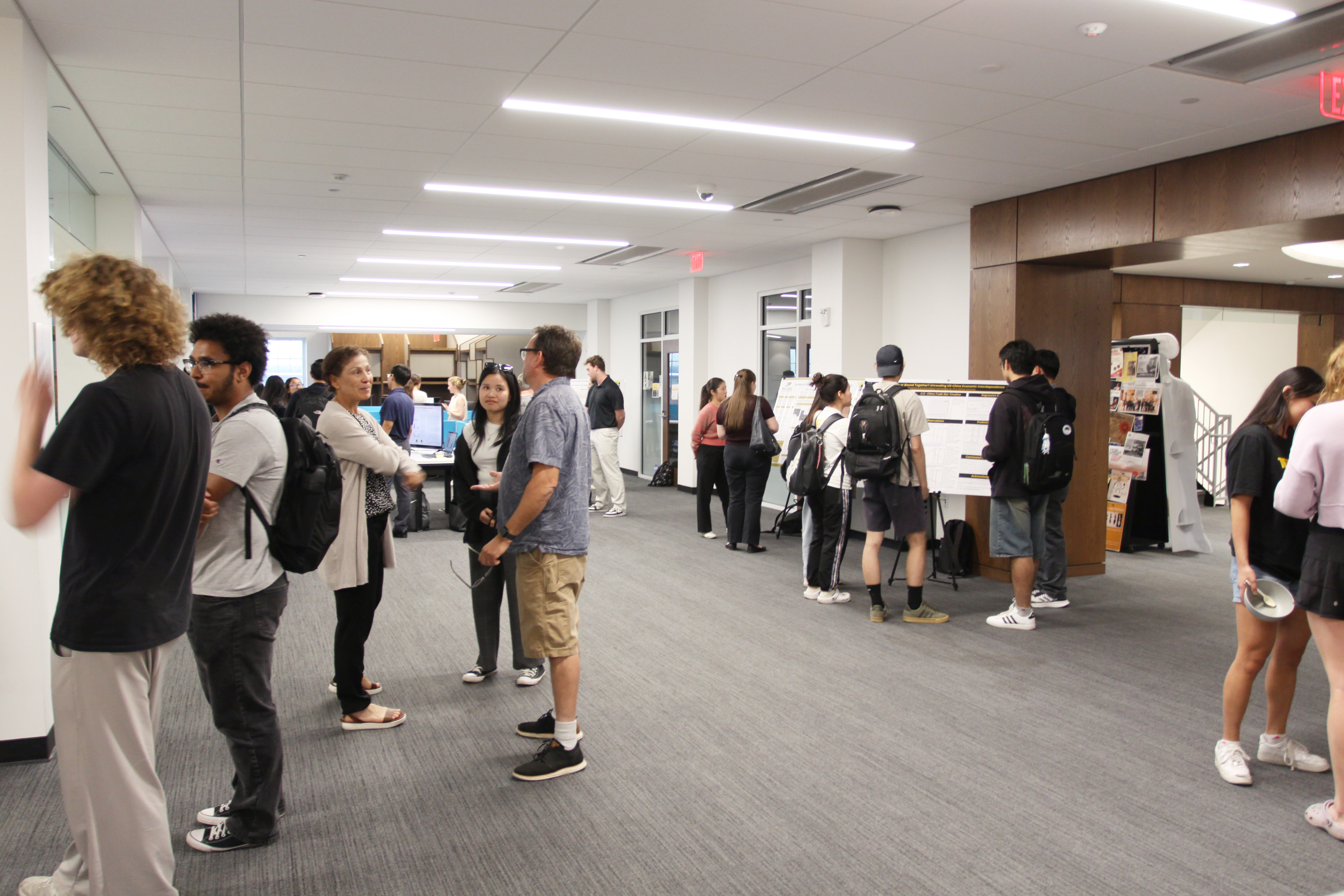Files
Download Full Text (9.5 MB)
Document Type
Poster
Publication Date
Fall 10-6-2022
Abstract
The exposed Icelandic crust contains ~10% rhyolite and ~90% basalt, and there is ample evidence in both recent and ancient rocks of interactions between rhyolitic and basaltic magmas. A spectacular and little-studied example is the c. 874 AD rhyolite eruption of Hrafntinnuhraun at the Torfajökull volcano, where after an initial explosive (Plinian) phase a large rhyolite lava field formed. In this lava field, one vent produced a hybrid lava which is a mechanically mixed blend of approximately 83% rhyolite and 17% basalt.
Polarized light microscopy was conducted on a suite of Hrafntinnuhraun samples that include flow-banded rhyolites, vesicular basaltic enclaves, and hybrid lavas. The flow-banded rhyolites are nearly aphyric, containing plagioclase and augite phenocrysts, with minor hornblende and biotite. The enclaves contain abundant plagioclase, augite, and olivine. The hybrid lavas contain plagioclase, augite, and olivine, but also contain minor amounts of biotite and hornblende.
To better evaluate the magma mixing process, one hybrid lava sample (83:17 rhyolite:basalt) was analyzed by EPMA. This sample contains mineral cargos belonging to both the rhyolite and basalt end-member magmas. Plagioclase compositions range from An22 to An87, with anorthite-rich grains displaying resorption textures. Of particular interest are olivine crystals derived from the basalt, which contain Fo-rich (~Fo80) interiors and narrow rims (~5- 10µm) with lower Fo content (~Fo70). Follow-up work on diffusion modelling will hopefully yield a timescale, thus providing valuable and new information on mixing processes in the conduit prior to the eruption and cooling of this hybrid lava.
Recommended Citation
Shannon, Chris; Brown, Kenneth L.; McGarvie, D.; and Looke, Matthew, "Magma Mixing in the 874 AD Hrafntinnuhraun Rhyolite Eruption" (2022). Annual Student Research Poster Session. 96.
https://scholarship.depauw.edu/srfposters/96




Funding and Acknowledgements
This project acknowledges Dipson Pradhan, DePauw Buehler Biomedical Imaging Center (BBIC), DePauw Dept. of Geosciences, and the people of Iceland.
Sources of funding: Geologic Society of America's (GSA) Onto the Future Program travel grant, GSA's North Central Section Student Travel Grant, and DePauw Student Research Grant. Grants were given to present at the GSA convention at Denver in October.